#Tibetan dumplings
Text




#Asian cuisine#food#rice#dumplings#ramen#curry#stir fry#asian food#jasmine rice#chinese food#noodles#japanese food#food photography#korean food#korean fashion#korean fried chicken#mongolian#taiwanese food#tibetan food#bok choy#indian food#lemongrass#pakistani food#soy sauce#peking duck#mooncake#sichuan peppercorns#cantonese food#hunan#egg custard tart
11 notes
·
View notes
Text

Tibetan Vegetable Momos with Spicy Sesame Tomato Chutney (Vegan)
#vegan#appetizer#snacks#dumplings#tibetan cuisine#asian cuisine#momos#cabbage#carrots#green onion#cilantro#ginger#garlic#tofu#black pepper#sea salt#sauces#chutney#tomatoes#soy sauce#red onion#sesame seeds#chili#lemon
164 notes
·
View notes
Text

4 notes
·
View notes
Text
FOOD RECOMMENDATION
If you ever find yourself in Bonn (NRW | Germany) and you love Tibetan Cuisine or would simply like to try something new, consider visiting "Himalayak".
They offer authentic Tibetan food, especially Momo (dumplings) and delicious teas I hadn't come across yet!

Personal Recommendation:
Fried and Steamed Dumplings with Ground Beef Filling and a spicy dip
Butter tea with salt (perfect for long days or cold weather) | po cha བོད་ཇ་ |
They also have a great dessert with Apple Dumplings and Roasted Barley-Flour | tsampa

11 notes
·
View notes
Note
+ his favorite meal
"I'm quite fond of momos."

1 note
·
View note
Text
urgh we have a chrism party tomorrow and we cant even bring our own alcohol. we really have to hang out after work while being sober 🤦
#i hope my tibetan cowprker brings dumplings again i'd die for them#the second ywar apprentices and i had quiet a lot of fun today tho so maybe tomorrow will be alright too#my posts
0 notes
Photo
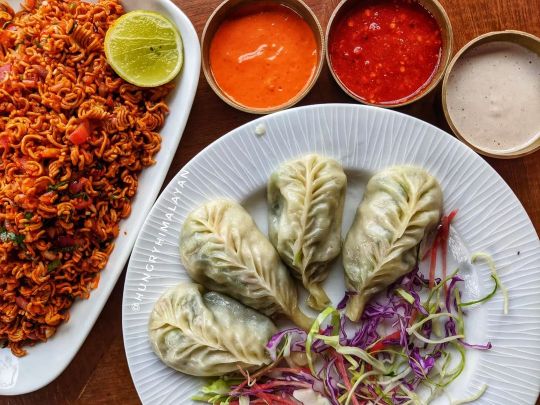
Sometimes,all you need is - delicious MOMO #momos #dumplings In Frame - Chicken Momo Tag your Momo Buddy❤️ More post are coming up stay tuned ✌️🙏 ' ' Do follow @hungryhimalayan for amazing content #hungryhimalayan , Thank for supporting us 🇮🇳 🔹🔹🔹🔹🔹🔹🔹🔹🔹🔹🔹🔹🔹 #nomnomnom#delhifoodjunkie#sodelhi#delhisehoon#tibetan#delhifoodbloggers#mumbaistreetfood#yummyinmytummy#nonvegetarian#foodphotographer#stayhome#yeti#momoland#toi#toifood#ndtvfood#bbcfood#lockdown#foodstyling#foodindia#quarantinelife#trendingtopic#fashion#instapic#instagood 🔹🔹🔹🔹🔹🔹🔹🔹🔹🔹🔹🔹🔹🔹🔹🔹🔹🔹 https://www.instagram.com/p/CkZ5wwoPKAE/?igshid=NGJjMDIxMWI=
#momos#dumplings#hungryhimalayan#nomnomnom#delhifoodjunkie#sodelhi#delhisehoon#tibetan#delhifoodbloggers#mumbaistreetfood#yummyinmytummy#nonvegetarian#foodphotographer#stayhome#yeti#momoland#toi#toifood#ndtvfood#bbcfood#lockdown#foodstyling#foodindia#quarantinelife#trendingtopic#fashion#instapic#instagood
0 notes
Note
What food from their 'cultures' do you think the gang would like? Real life food
Oh, this will be a fun question to answer! I'll make this an ongoing series for as many characters as I can think of.
Favorite Foods: Aang
Seeing as Aang has always loved traveling the world on Appa, he strikes me as someone who prefers food he can easily carry and eat while in the air. He's more a snack guy than a meal guy, is what I'm saying. He's also shown to be very fond of egg custard tarts and fruit pies, so I assume he also really likes rich desserts. With these considerations in mind, here's Aang's food board:

Momos - Tibetan stuffed dumplings. They're easy to carry around and eat on the go. Plus, they share a name with everyone's favorite flying lemur. I think Aang's favorite momo filling would be cheese with mushrooms or veggies.
Shom-Dae - Tibetan rice pudding. It's made by mixing fresh steamed rice with yogurt and sugar. Tibetan yogurt is made from yak milk, so it's very rich in fat content. Yogurt is so beloved in Tibet that it even has its own festival there, called Sho Dun.
Bhatsa Marku - A cheesy dessert pasta from Tibet. The primary ingredients are gnocchi-like noodles, dried yak cheese, butter, and sugar. I've also seen non-dessert versions comprised of the gnocchi noodles with mushrooms and butter. I think Aang would love both.
Chhurpi - A rock-hard cheese traditional to the Himalayas. It's typically a yak cheese that has been smoked and dried to remove all the moisture content. This allows it to be easy to carry and transport, as it can remain mold-free and edible for up to 20 years. One cube of chhurpi can be chewed on for hours, as it takes quite a while for the cheese to soften in the mouth.
Ngarchur - A dried Tibetan sweet cheese made from boiled yogurt. Like chuurpi, it's keeps well and is easy to transport, although it's not hard.
Khapse - Tibetan fried dough. Depending on how you shape the dough, it can be crunchy like chips or soft like youtiao.
Sanga Balep - A crispy Tibetan pastry covered in powdered sugar. Not much to say other than it looks really satisfying to eat.
I also have a series on possible Air Nomad cuisine here:
Part 1
Part 2
Part 3
Part 4
Like what I’m doing? Tips always appreciated, never expected. ^_^
https://ko-fi.com/atlaculture
417 notes
·
View notes
Note
I love your atla snack headcanons post, but wasn’t Aang’s favorite Egg Custard Tart? Or is this something new he found later on and his fave changed? :)
I'm pretty sure within the AtLA lore egg custard tarts are an Earth Kingdom treat-- Aang says his favorite version of them is from Omashu! But momo is a dumpling from Tibet, and since the Air nomads are based on Tibetan monks, and Aang named his lemur that while standing in the empty shell of the temple that used to be his home, I kind of think he was missing a lot of things in that moment, a taste of comfort among them.
7 notes
·
View notes
Note
what are some of your favorite indian dishes? i'm trying to expand my pallet and i think a great way to do that would be trying foods from other cultures :)
hello anon! this is going to be a long answer :)
Edit: I realise now that I should've probably organized this better.
Edit2: I'm obsessing a lot over this aren't I?
so I'm VERY fond of pav bhaji, if that wasn't already obvious 🤭. Pav is a sort of bread and bhaji literally translates to vegetable. The vegetable curry we use in this dish particularly is a deep red-orange colour and is medium spicy (though that depends, I guess). Pav bhaji is a main course dish but some of my friends eat it as a quick snack as well. You can add cheese to your bhaji if you wish.
Next, I LOVE biryani. It's basically fried or roasted rice with an abundance of flavour. Historically, it used to be served to the sultan and the nobility at feasts and holy fuck, it sure is a feast! Each region of India has their own variant and the most popular one is the Hyderabadi biryani. Now, I quite prefer chicken or mutton biryani but paneer or cottage cheese is a nice alternative for vegetarians.
Next, I believe no one could ever dislike chole bhature. The bhature are these huge deep-friend circular breads (but very different compared to pav). The chole are spicy chickpeas. The dish is more popular in the northern half of the country and typically eaten as breakfast over there. I'm a mere mortal though, so I eat it at lunchtime.
You've probably already tried butter chicken and some of my classmates think it's overhyped but I love it very much (only the kind my grandmother makes though).
I would say momos fall into Nepali or Tibetan cuisine but some of my friends ADORE them. They're basically dumplings but I've heard they can also be cooked as soup versions??
Now I'm going to name a few other dishes that I think you should try:
Vindaloo (curry- kinda spicy though)
Xacuti (with rice or Goan bread called poi)
Palak paneer (pureed spinach with cottage cheese cubes)
BONUS: Solkadhi: a pretty pink-coloured drink (made from coconut milk and dried kokum skins) very demure.
3 notes
·
View notes
Text





Final photodump from the trip: food! The majority of these aren't Swiss-specific, but it turns out that momos (a Nepalese/Tibetan type of dumpling) are extremely popular there (and very delicious + available in vegan options!).
5 notes
·
View notes
Text
Wonders of Leh Ladakh with The Samsara Holidays: Your Ultimate B2B Partner
Explore Leh Ladakh like never before with The Samsara Holidays' exclusive B2B packages!
Ladakh's unique landscapes, rich cultural heritage, and adventurous opportunities make it a popular destination for nature lovers, adventure enthusiasts, and those seeking a glimpse into Tibetan-Buddhist culture.
Ladakh is a region in the northernmost part of India, located in the state of Jammu and Kashmir. It is renowned for its stunning landscapes, high-altitude mountain passes, ancient monasteries, and unique cultural heritage.

Here is some information about Ladakh:
Geographical Location: Ladakh is situated in the Indian Himalayas, bordered by Pakistan to the west and China to the east. It is nestled between the Karakoram and Great Himalayan mountain ranges.
Capital: The capital of Ladakh is Leh, which is located at an altitude of around 3,500 meters (11,500 feet) above sea level. Leh serves as the administrative and cultural center of the region.
Landscapes: Ladakh is known for its breathtaking landscapes, including rugged mountains, vast barren valleys, deep gorges, and crystal-clear lakes. The region is often referred to as the "Land of High Passes" due to its numerous mountain passes, such as Khardung La and Chang La, which offer spectacular views.
Buddhist Influence: Ladakh has a strong Buddhist influence, with numerous ancient monasteries scattered across the region. These monasteries, such as Hemis, Thiksey, and Alchi, are not only religious centers but also architectural marvels, showcasing intricate artwork and valuable Buddhist relics.
Adventure Tourism: Ladakh attracts adventure enthusiasts from around the world. It offers various thrilling activities, including trekking, mountaineering, river rafting, and biking. The challenging terrain and high-altitude passes provide opportunities for adrenaline-pumping adventures.
Festivals: Ladakh celebrates several vibrant festivals that showcase the region's cultural traditions. The most famous festival is the Hemis Festival, held at Hemis Monastery, featuring colorful masked dances, music, and rituals. Other notable festivals include Losar (Tibetan New Year) and Dosmoche.
Local Cuisine: Ladakhi cuisine is influenced by Tibetan and Central Asian flavors. Popular dishes include Thukpa (noodle soup), Momos (steamed dumplings), Skyu (a hearty stew), and Butter Tea. The cuisine often incorporates locally grown barley, wheat, vegetables, and dairy products.
Climate: Ladakh experiences a cold desert climate due to its high altitude. Summers (June to September) are mild with pleasant daytime temperatures, while winters (October to april) are extremely cold, and many areas become inaccessible due to heavy snowfall.
Accessibility: Ladakh can be accessed by road and air. Major Indian cities are connected to the region by the Kushok Bakula Rimpochee Airport in Leh. The two primary highways that link Ladakh to the rest of the nation are the Leh-Manali Highway and the Srinagar-Leh Highway.
Inner Line Permit: To access some restricted regions in Ladakh, visitors who are not nationals or residents of India must get an Inner Line Permit (ILP). The Leh government's authority or authorized travel agencies can provide the permit.
Discover why The Samsara Holidays is your go-to choice for unforgettable B2B experiences in Leh Ladakh.
Bullet Points:
Customized B2B Packages For Ladakh curated to meet the diverse needs of your clients.
An extensive network of trusted partners ensures seamless travel arrangements.
Unparalleled expertise in crafting memorable journeys through the breathtaking landscapes of Leh Ladakh.
A dedicated support team is available 24/7 to assist you at every step of the way.
Conclusion
With The Samsara Holidays, embark on a journey of discovery and adventure in Leh Ladakh that leaves a lasting impression on your clients.
Call to Action
Ready to elevate your travel business? Contact us today to learn more about our exclusive B2B packages for Leh Ladakh!
#B2B packages for Leh Ladakh#The Samsara Holidays#Samsara Holidays#B2B Packages for Ladakh#DMC for Ladhak
4 notes
·
View notes
Text
If you’re going to use the argument of “Every culture has braids.”, at least come with evidence.
Because I promise this:

And

Are two very distinctive styles.
The second picture is of Tibetan braids ( I don’t know what they’re called, if you do please let me know) and serve as a status symbol( or that of prosperity and health I could be mixing this up. If you know please correct me) . And often comes up to the number of 108( a sacred number in Bushism). They’re more so closer to mirobraids, but they aren’t braided to the scalp.
Box braids can come in a variety of numbers. And it’s one of the few styles that remained in African American culture for decades, even after enslavement outside of cornrows.
Like how are you going to say a French Braid is the same as cornrows when it’s clearly two very distinct styles. It’s like saying all culture make dumplings, when only a handful of cultures call them dumplings.
9 notes
·
View notes
Text

3 notes
·
View notes
Text
MONGOLIA
DAY ONE
To get to Mongolia from the US, you have to have a layover. The layovers are usually in Seoul, Beijing, Moscow, or Istanbul. Many people land in one of those 4 cities and then take the train to Mongolia. You do not need a visa if you are visiting for less than 90 days, but you must have a valid passport. When packing for Mongolia, make sure to bring breathable and clothes for the warm weather. The climate in Mongolia is high, cold, and dry, with the average summer temperature being 50° to 80 °F, and the winter being 32 °F.
The place I decided to stay in Mongolia was a Ger in Ulaanbaatar. This place is a collection of gers, each acting as a different room in a house. You share the living room, kitchen, and bathroom with your host, Oyuntsetseg. It costs $68 USD a night, but since Mongolia uses the Mongolian Tugrik (MNT ₮), it cost 231,018.54 ₮ a night. I spent 2 nights, so it ended up being 461,956.05 ₮. Oyuntsetseg accompanies her guests to the markets and into town, and she even makes you food. People said that Oyuntsetseg was very nice, but it was difficult to talk to her because she mainly spoke Khalkha Mongolian (main language of Mongolia), and not a lot of English.
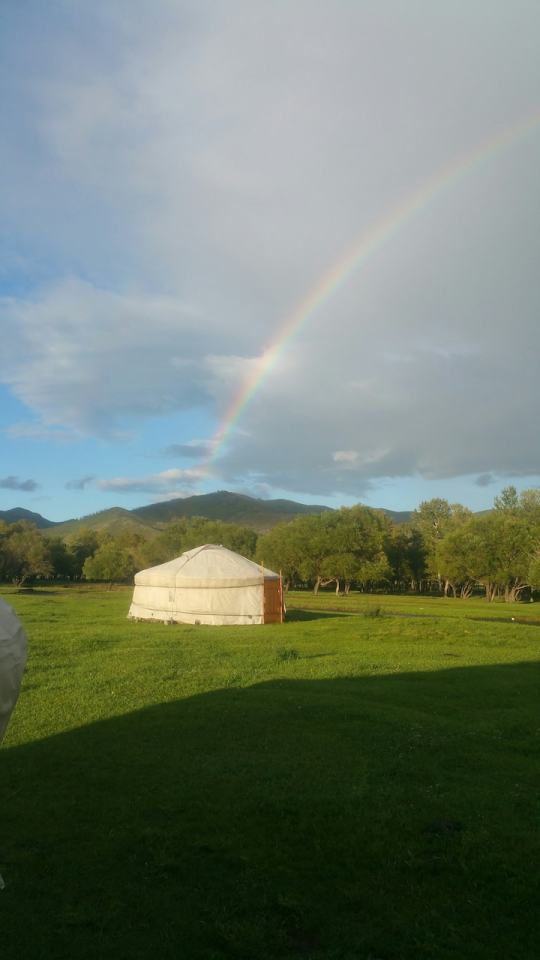
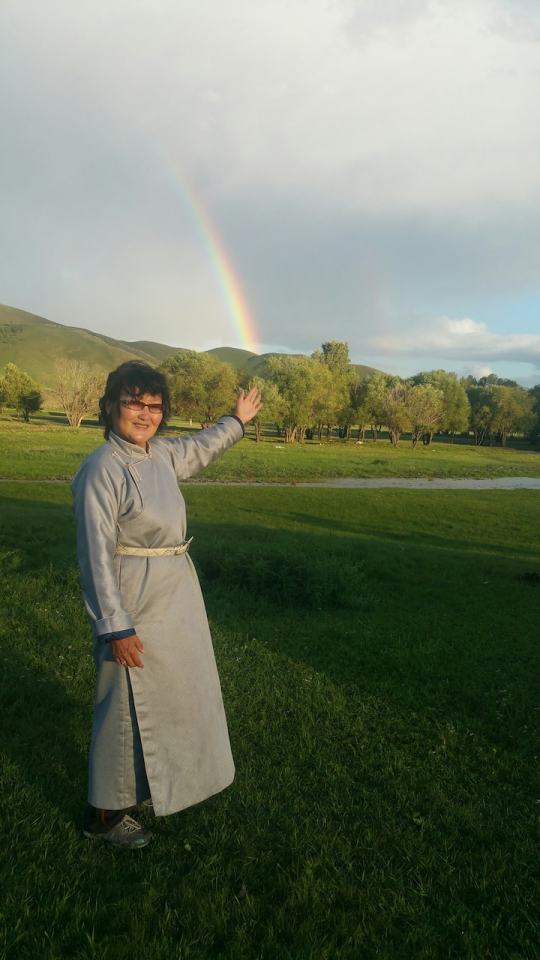

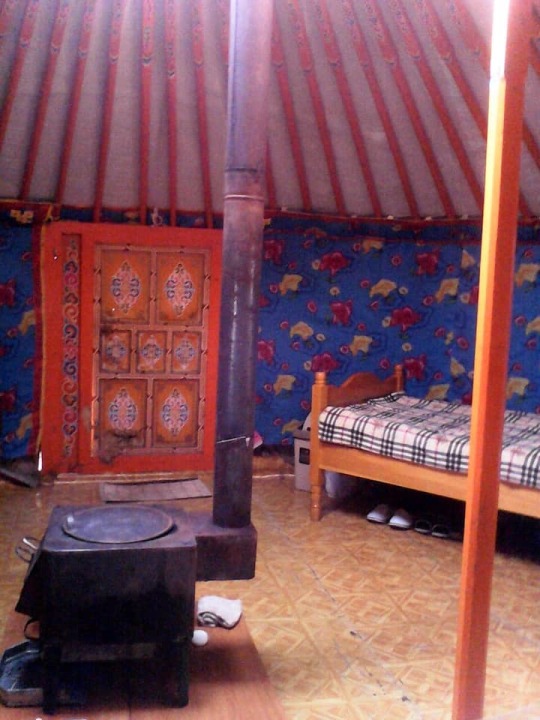
After settling into my ger, Oyuntsetseg said she had to make me food, so she made me the cuisine that Mongolia is known for. Buuz. Buuz is a Tibetan-style dumpling. Inside the dumpling is either minced lamb, mutton, or beef, and it is flavored with onion or garlic. Some people make it with sprouted fennel seeds as well. Oyuntsetseg made my buuz with mutton inside, since that is her specialty. The buuz was served with rice and cabbage. For dessert, Oyuntsetseg makes her guests Boortsog which is a fried dough pastry, and it is the most common cookie in Mongolia.

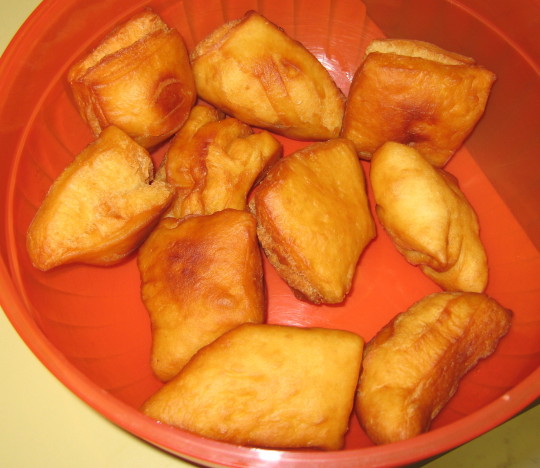
Since I was in the capital of Mongolia, Ulaanbaatar, I could do a lot of things. Ulaanbaatar has a population of 1.5 million, which is about half of Mongolia's population of 3.3 million. My ger was only an hour train ride away from the main city of Ulaanbaatar.
The first thing I did in Mongolia was visit The Fine Arts Zanabazar Musuem. Admissions for the museum is 15,000 ₮ ($4.43). Their upcoming exhibition is “Airag Feast” which is named after a painting made in 1995, originally painted by B. Sharav and about the resolutions of the Mongolian government. The exhibition features the actual painting, along with photographs, 2D animation, and other paintings are influenced by the original piece of art.



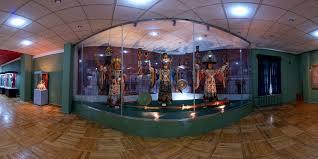
After visiting the museum, I went to Genghis Statue & Gorkhi-Terelj National Park with Oyuntsetseg. The reasoning behind the statue of Genghis Khan is because Mongolians recognize him as their founding father, and without him, Mongolia would not exist. His statue is 130 feet tall and made of stainless steel. The statue points east towards his birthplace. You can go inside the horse that Genghis Khan is riding in the statue. Nearby the statue is Gorkhi-Terelj National Park. The highest point in the park is Avkhan Mountain which is 2664 meters tall.
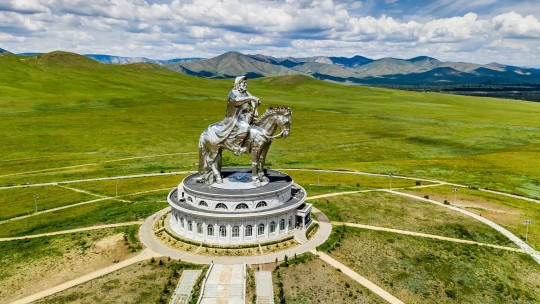
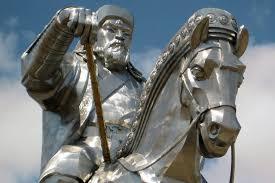
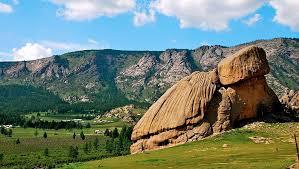

DAY TWO
In Mongolia, Buddhism is the majority religion, with 51.7% of their population practicing. Their second-biggest group is nonreligious people, that percentage being 40.6%. And finally, their third biggest is Islam, with a percentage of 3.2%. Buddhism first arrived in Mongolia in the 2nd century BC, but it became widespread in the 16th century.
I decided to look at Buddhist temples in Ulaanbaatar today. I stopped at Gandantegchinlen Monastery. The temple was founded in 1809, and between 1944 and 1989, it was the only active monastery in Mongolia. Today it is the center of Buddhism in Mongolia, there are more than 100 resident monks. In the temple, there is an 85-foot statue of Avalokiteśvara (who is a tenth-level bodhisattva) made of gilded bronze. The name Gandantegchinlen is a Tibetan word for “complete rejoicing.”


After the temple, I went to Lake Khövsgöl, which is the largest freshwater lake in Mongolia based on volume. Second-largest by ares after Uvs Lake. I had to fly in from Ulaanbaartar to Mörön to get to the lake. The lake is named Huvsgul in English texts, and Далай ээж in Mongolian text, which means 'Ocean Mother.' The lake is 5,397 feet above sea leave, 85 miles long, and 860 feet deep. Lake Khövsgöl holds 70% of the freshwater of Mongolia, and 0.4% of the freshwater in the world. I don't know if that is a large amount or not. You can get a tour of the lake, but only if you were staying at one of the cabins or gers located along the water. The water is very calm, so many people like to go sailing or kayaking. There is a good deal of wildlife around Lake Khövsgöl, including, ibex, argali, elk, wolf, wolverine, musk deer, brown bear, Siberian moose, and sable.

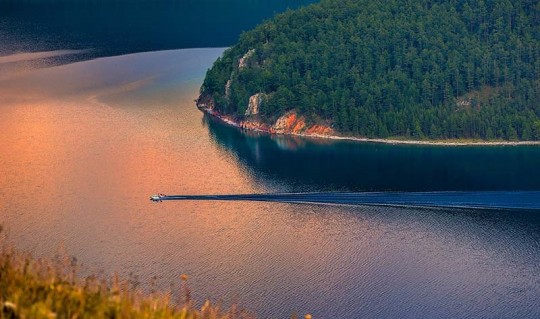
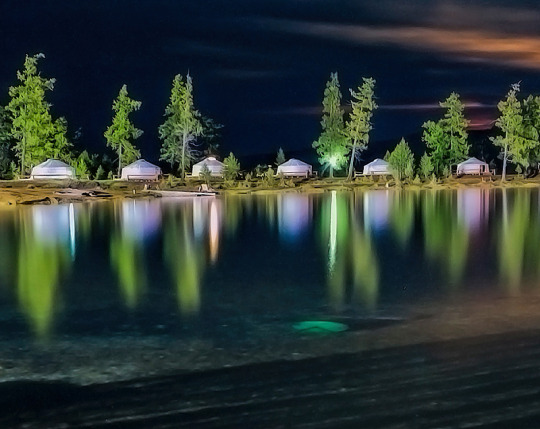
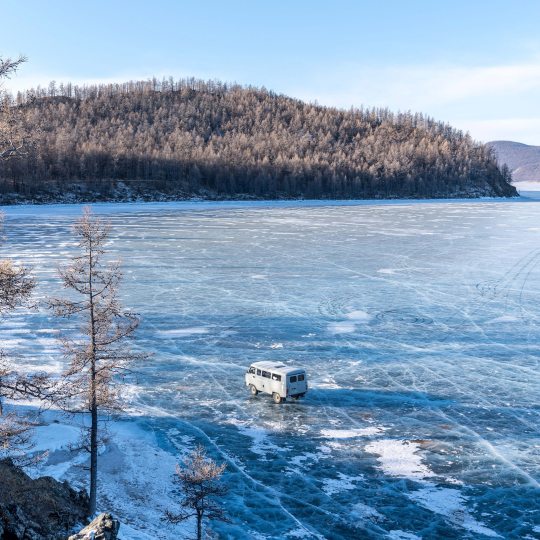
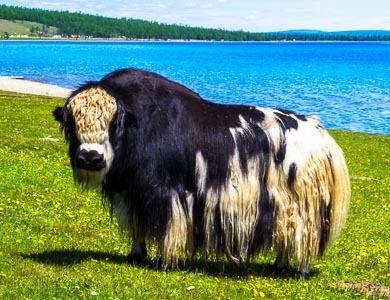
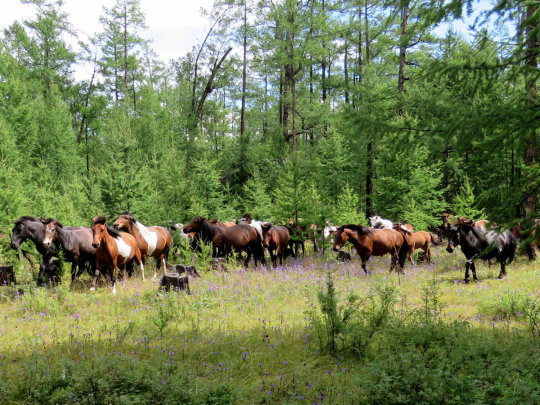
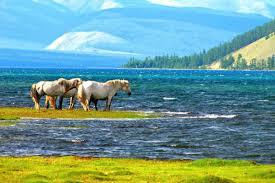

DAY THREE
I am leaving Mongolia today. I enjoyed my time here. Mongolia is full of culture and beautiful scenery. I also loved Oyuntsetseg and I will forever miss her. I am glad that Mongolia isn't like a super touristy place, so I didn't have to go to all these little stupid shops with expensive stuff. The climate here was amazing, it was like Minnesota but better. Let's see if the Philippines competes with this amazing experience.
3 notes
·
View notes
Text

Day 19: What is your MC's favourite food?
Neither I nor my characters can pick just one favourite! Especially since this WIP takes place in a culinary school. I have recipes linked!
樱 likes strong flavours, but little to no spiciness. Scallions and sesame are some of his favourite flavours, and he prefers fowl to red meat. Noodles and dumplings are his go-to for savoury dishes, but he has a mad sweet tooth as well. A few of his favourite dishes include:
Soup dumplings

and tang yuan in sweet osmanthus soup.

For tea, 樱 likes honey-sweetened jasmine green tea, such as jasmine chun hao.


尧 likes its spicy. The spicier the better! He likes Sichuan-inspired recipes. When he eats sweets (which is seldom) he prefers to steal them off 樱's plate. Meat-heavy dishes with heaping amounts of chili are his favourite for sure, such as:
Pork wontons in chili oil

and spicy sesame noodles.

For tea, 尧 likes heavier flavours with little to no sweetness, such as Tibetan po cha (butter tea).

Original Camp Prep April 2023 meme by @lola-theshowgrl
#i am so hungry now lol#might make some of my own spicy noodles...#mc: 尧#mc: 樱#wip: the red pavilion#camp prep april 23#camp nanowrimo#camp nano april 2023#food
7 notes
·
View notes